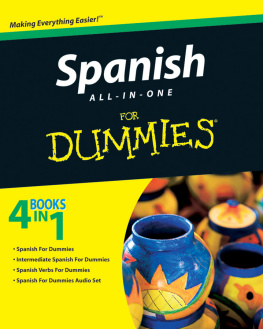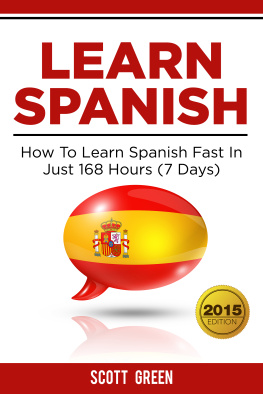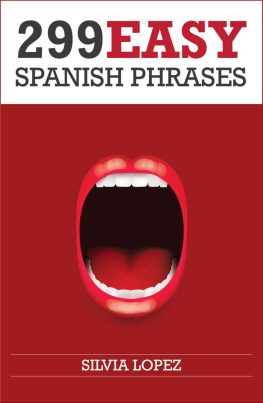Timothy R. Walton - The Spanish Treasure Fleets
Here you can read online Timothy R. Walton - The Spanish Treasure Fleets full text of the book (entire story) in english for free. Download pdf and epub, get meaning, cover and reviews about this ebook. year: 2015, publisher: Pineapple Press, genre: History. Description of the work, (preface) as well as reviews are available. Best literature library LitArk.com created for fans of good reading and offers a wide selection of genres:
Romance novel
Science fiction
Adventure
Detective
Science
History
Home and family
Prose
Art
Politics
Computer
Non-fiction
Religion
Business
Children
Humor
Choose a favorite category and find really read worthwhile books. Enjoy immersion in the world of imagination, feel the emotions of the characters or learn something new for yourself, make an fascinating discovery.
- Book:The Spanish Treasure Fleets
- Author:
- Publisher:Pineapple Press
- Genre:
- Year:2015
- Rating:3 / 5
- Favourites:Add to favourites
- Your mark:
- 60
- 1
- 2
- 3
- 4
- 5
The Spanish Treasure Fleets: summary, description and annotation
We offer to read an annotation, description, summary or preface (depends on what the author of the book "The Spanish Treasure Fleets" wrote himself). If you haven't found the necessary information about the book — write in the comments, we will try to find it.
The Spanish Treasure Fleets — read online for free the complete book (whole text) full work
Below is the text of the book, divided by pages. System saving the place of the last page read, allows you to conveniently read the book "The Spanish Treasure Fleets" online for free, without having to search again every time where you left off. Put a bookmark, and you can go to the page where you finished reading at any time.
Font size:
Interval:
Bookmark:

the spanish treasure fleets

Evidence that an integrated global economy existed more than 300 years ago. This silver peso, from the Mexico City mint, was one of millions of crude coins, known as cobs, that the Spanish produced in the colonial mints and then sent to Europe via the treasure fleets. Many of these coins ended up in the Netherlands as commercial profits or war booty. The Dutch, the greatest global traders of the seventeenth century, then used this form of currency, highly regarded because of its high silver content, to purchase goods in the Far East. On a voyage to Asia in 1656, the Dutch trading vessel Vergulde Draeck (Golden Dragon), carrying thousands of coins, including the one pictured here, sank off western Australia. Sports divers found the wreck in 1963, and in the 1970s professional marine archaeologists painstakingly surveyed the site and salvaged much of what remained of the cargo. (Photo from the authors collection)
the spanish treasure fleets
Timothy R. Walton

Pineapple Press, Inc.
Sarasota, Florida
Copyright 1994 Timothy R. Walton
All rights reserved. No part of this book may be reproduced in any form or by any means, electronic or mechanical, including photocopying, recording, or by any information storage and retrieval system, without permission in writing from the publisher.
Inquiries should be addressed to:
Pineapple Press, Inc.
P.O. Box 3889
Sarasota, Florida 34230
www.pineapplepress.com
Library of Congress Cataloging-in-Publication Data
Walton, Timothy R., 1948
Spanish treasure fleets / Timothy R. Walton
p. cm.
Includes bibliographical references (p. ) and index.
ISBN 1-56164-049-2 (alk. paper)ISBN 1-56164-261-4 (pbk. : alk. paper)
1. Latin AmericaHistoryTo 1830. 2. Gold mines and miningLatin AmericaHistory. 3. Silver mines and miningLatin AmericaHistory. 4. SpainCommerceHistory. 5. Merchant marineSpainHistory. 6. MoneyPolitical aspectsHistory. 7. Power (Social sciences)Economic aspectsHistory. 8. CommerceHistory.
I. Title.
F1411.W351994
980.013dc20
93-46419
ISBN-13: 978-1-56164-261-8
First Edition
10 9 8 7 6 5 4 3
Design and composition by Cynthia Keenan
Printed in the United States of America
contents
maps and illustrations
Maps
.
.
.
.
.
.
.
.
.
Illustrations
.
.
.
.
.
.
.
.
.
.
.
.
.
.
.
.
.
.
.
.
.
.
.
.
.
.
.
.
.
.
.
.
.
.
.
.
.
.
.
.
.
.
.
.
.
.
.
.
.
.
.
.
.
.
.
.
.
.
All photographs of coins are actual size.
preface

t his is a book about money. It looks at money as an economic and political institution that motivates people, shapes nations, and provides part of the historical record of our past. The story that unfolds in the following pages involves some of the most fundamental of human pursuits the interwoven quests for wealth and power. There are many case studies of what individuals and nations do to acquire money and how they have used and abused great wealth once it has come into their possession. One of the most instructive examples illuminating these issues is the story of the struggle to control the mineral wealth of Latin America.
Five hundred years ago, Columbus sailed to the New World and claimed it for Spain. His voyages opened up a new era in history in which the previously isolated regions of the globe became linked into a single political and economic system. As a result, events in Madrid, London, and Amsterdam had repercussions in Manila, Mexico City, and New York. It is an era we are still living in, with oil and coffee as todays widely traded international commodities instead of the silks and spices of the sixteenth century. In our time, the American dollar is an international currency that is crucial for making the international system work. Four hundred years ago, it was the precious metals of the Indies that performed a similar function. For 300 years, the Spanish treasure fleets kept gold and silver moving throughout the world, and the ships, cargoes, and sailors of the treasure fleets helped create the foundations of the modern political and economic system. This book is the story of how those fleets performed their function.
My hobby of coin collecting originally prompted me to research the story of the Spanish treasure fleets. Like most collectors, I spend a certain amount of time wondering where my coins traveled before they reached me. There are some Spanish colonial coins in my collection, and its hard to hold in your hand a Spanish piece of eight, minted in Mexico but bearing chopmarks indicating that it circulated in China, without asking yourself what tales it would tell if it could talk. Such a coin is concrete proof that a worldwide financial and trading system has functioned for centuries.
As I began to read about the mines, mints, and galleons of the Spanish Empire, the outlines of a fascinating maritime epic covering 300 years emerged. It was not too surprising to find that Christopher Columbus and Sir Francis Drake had played important parts in this saga, but it was unexpected to find that Sir Isaac Newton and Thomas Jefferson had also been involved. As I read more, it became clear that although a great deal of information is available about the diffusion of gold and silver from the Americas throughout the world, no one has pulled the whole story together and placed it into the economic, strategic, and diplomatic context of its time. That is what I have tried to do in this book.
To tell the story of the treasure fleets, I have concentrated on trying to find answers to several interrelated questions:
What steps did the Spanish take to produce maximum output from the gold and silver mines and assure the political and economic value of what they produced?
How much treasure resulted from these methods of production and how did the Spanish transport it to Europe?
What were the main threats to the treasure fleets, and how successful were Spanish plans for protection?
What happened to the large amounts of gold and silver carried by the treasure fleets, including what was lost in wars and shipwrecks?
What role did precious metals from the Americas play in the budget of the Spanish government and the international financial system?
To find answers to these questions, I began to read books on the treasure fleets and related subjects and to jot down notes.
As my research continued, I found that many of my other interests and experiences helped get me involved in writing the story of the Spanish treasure fleets. For example, I served in the United States Navy and sailed some of the same routes taken by the Spanish treasure fleets. I have retained an interest in maritime and strategic matters ever since, and my years in the Navy helped me understand some of the problems, such as weather and distance, that Spanish sailors had to cope with.
Next pageFont size:
Interval:
Bookmark:
Similar books «The Spanish Treasure Fleets»
Look at similar books to The Spanish Treasure Fleets. We have selected literature similar in name and meaning in the hope of providing readers with more options to find new, interesting, not yet read works.
Discussion, reviews of the book The Spanish Treasure Fleets and just readers' own opinions. Leave your comments, write what you think about the work, its meaning or the main characters. Specify what exactly you liked and what you didn't like, and why you think so.









